
How big is a pixel?
Pixels are pixels that create the image. Depending on the resolution, there are several million pixels on a screen. But how big is a pixel anyway?
Have you ever wondered how big a pixel is on your 65-inch screen? I have. When writing an article about the amount of data that high-resolution content generates. I want to know exactly. So I do the maths.
What is a pixel?
Your TV is essentially made up of dots that create the picture. These pixels are called pixels. Depending on the colour that a pixel makes, a coherent image is created. The total of all pixels results in the resolution of the image.
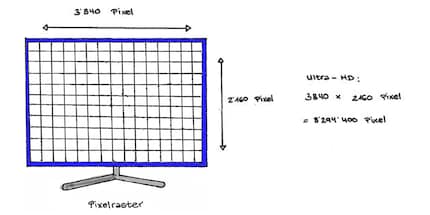
Source: Luca Fontana
An Ultra HD display consists of exactly 8,294,400 million pixels. You get this by multiplying the number of pixels per horizontal axis by the number of pixels per vertical axis. So 3840 by 2160 pixels.
How big is a pixel?
The size of a pixel depends on the size of the screen. In this article, I am assuming a 65-inch television. One inch is 2.54 cm.
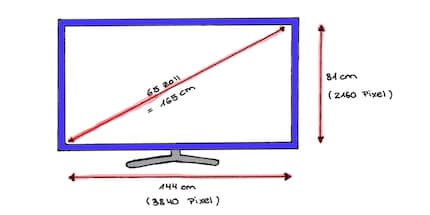
- Diagonal: 165 cm
- Width: 144 cm
- Height: 81 cm
Then the calculation for the width and height of a pixel:
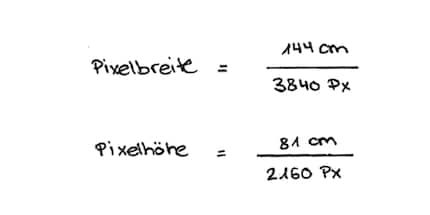
If 3840 pixels have space on a width of 144 cm, then this results in a pixel width of 0.0375 cm. If there is space for 2160 pixels on a height of 81 cm, then the pixel height is also 0.0375 cm.
So:
- Pixel width: 0.375 mm
- Pixel height: 0.375 mm
Imagine that such a pixel would be about the size of a five-figure coin. How big would the corresponding screen be?
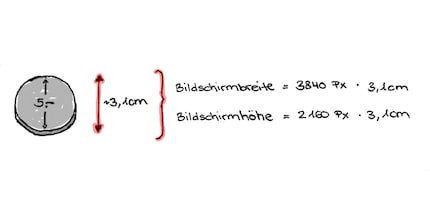
This results in:
- Screen width: 119 m
- Screen height: 67 m
The screen would therefore be the size of a football pitch. One with the dimensions of the one in the Allianz Arena in Munich.
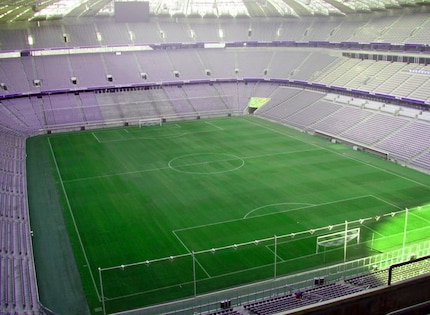
So: If someone puts a five-figure coin on the pitch and says "voilà, that's a pixel", then you have an idea of how big a pixel is.
Bonus: How big is a subpixel?
It's getting more and more crazy. Because a pixel actually consists of three other subpixels. Each subpixel produces one of the three primary colours red, green and blue. Together they create the colour of the pixel.
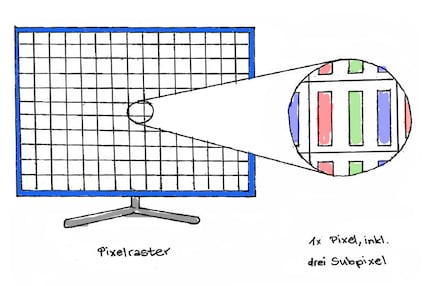
Source: Luca Fontana
When manufacturers build pixels, they build subpixels. The width of each subpixel is a third of the size of a pixel.
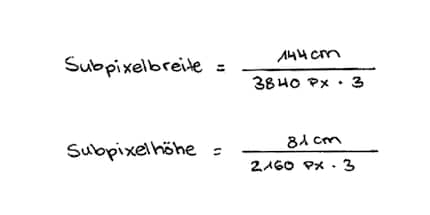
This results in:
- Subpixel width: 0.125 mm
- Subpixel height: 0.375 mm
The subpixel height remains the same as the pixel height, as you can see in the graphic above. Otherwise each pixel would have nine subpixels. Thanks @Weyermaa for the hint!
So if a subpixel had the width of a nickel, then the size of the screen would be:
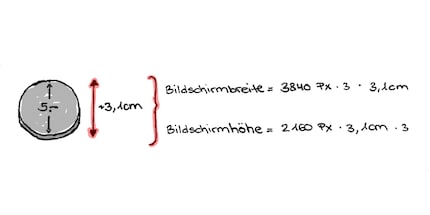
So:
- Screen width: 357 m
- Screen height: 201 m
This is roughly equivalent to the super container ship MSC Anna if you were to place it three times side by side.

Drunk, it once occurred to me that it must be bacteria that build pixels like this. Inevitably.
I write about technology as if it were cinema, and about films as if they were real life. Between bits and blockbusters, I’m after stories that move people, not just generate clicks. And yes – sometimes I listen to film scores louder than I probably should.
Interesting facts about products, behind-the-scenes looks at manufacturers and deep-dives on interesting people.
Show all